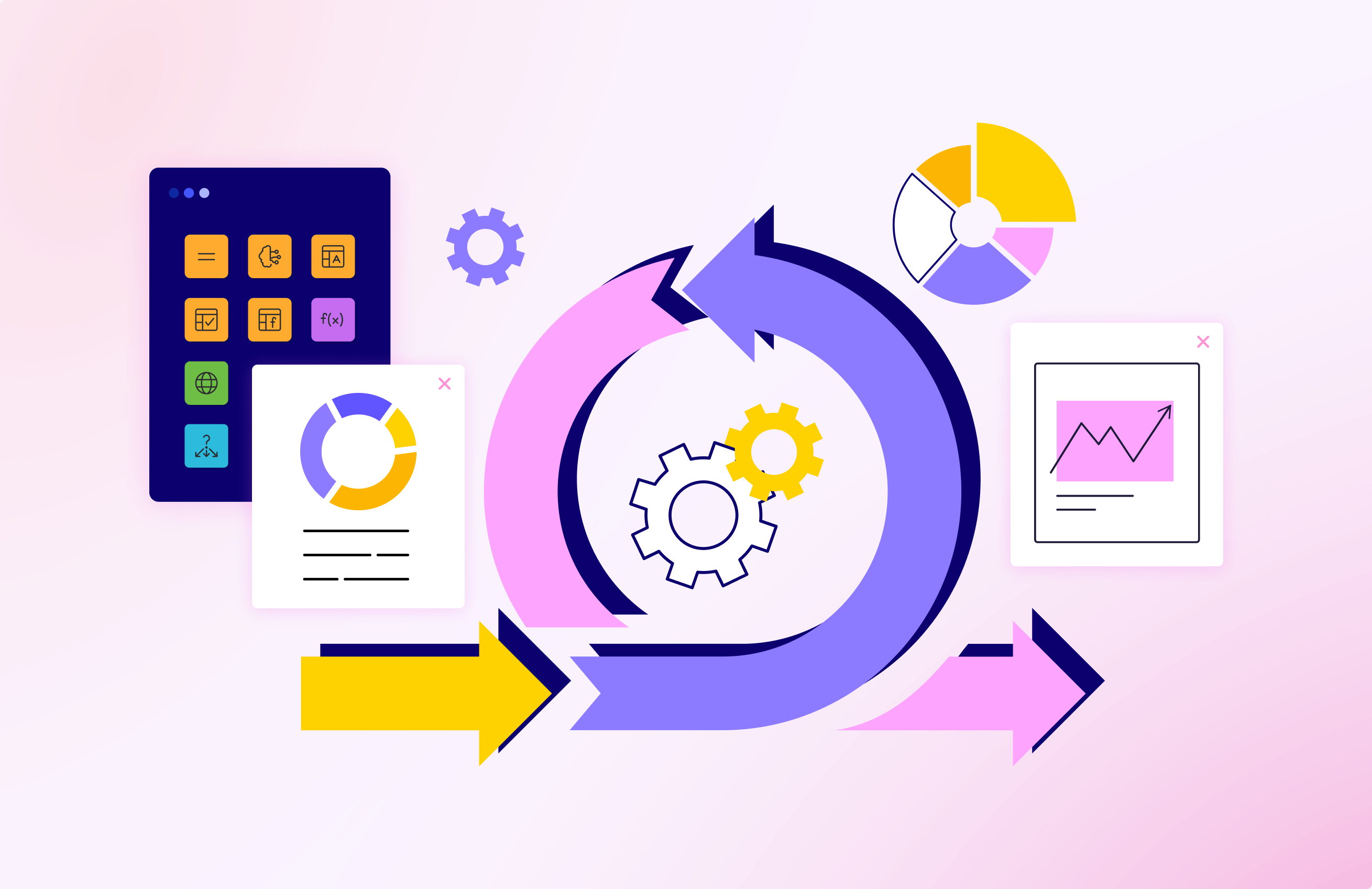Top 9 Low-code Development Trends to Follow in 2024
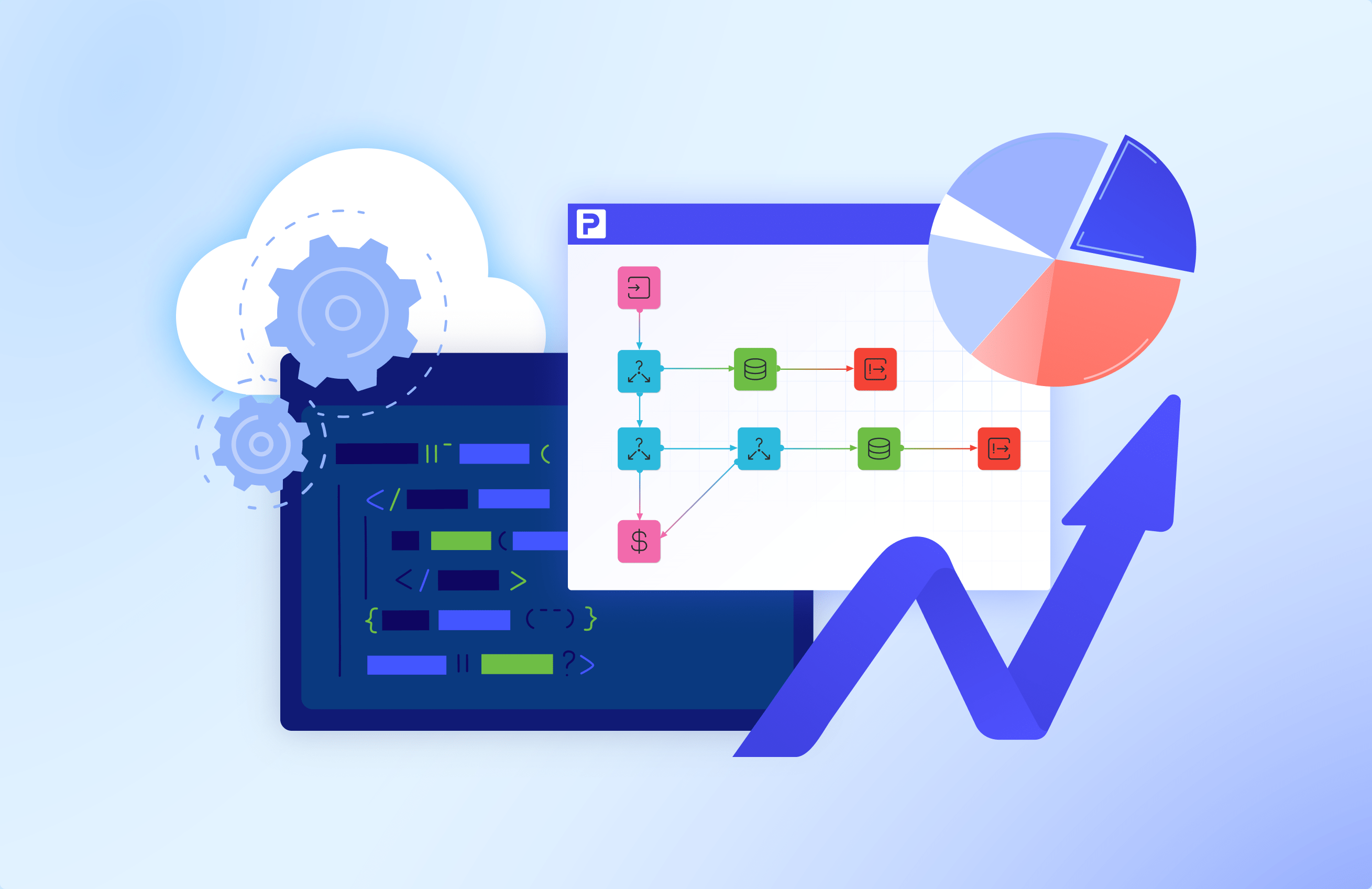

Low-code platforms have emerged as a major changer in, revolutionising how firms create apps. These user-friendly platforms enable local developers, including those with no coding experience, to build unique apps, simplify operations, and react to fast-changing market needs.
Low-code trends have various advantages, including shorter development time, cheaper costs, increased scalability, and reduced risk. These benefits have boosted LCP growth across several sectors, spawning new use cases such as quick prototyping, rapid deployment, and new product development. This expansion is fueled by the growing demand for agility, creativity, and cost-effectiveness in software development.
Why Low-Code is the Future of Programming
Low-code programming is a method of developing software that tries to simplify and accelerate the application development process. Here are the characteristics that distinguish low-code platforms as the most promising technology for software development:
Visual Development Environment
Low-code platforms provide a visual development environment in which users may utilise graphical components, drag-and-drop capability, and other visual representations to design the user interface, establish data models, and generate business logic.
Automated Code Generation
Low-code solutions frequently produce code automatically depending on the visual components and parameters that the user has created. This lowers the need for manual coding, which speeds up the development process.
Rapid Prototyping
Because low-code development enables rapid prototyping and iteration, developers may quickly generate a functioning version of an application and simply make changes, allowing for faster feedback and cooperation.
Cross-Platform Compatibilities
Many low-code platforms are intended to let developers create apps that can operate on numerous platforms, such as web browsers, mobile devices, and desktop computers.
Accessibility
Low-code platforms strive to democratise development by making application development available to a larger audience, including business analysts, project managers, and others with domain expertise but limited programming abilities.
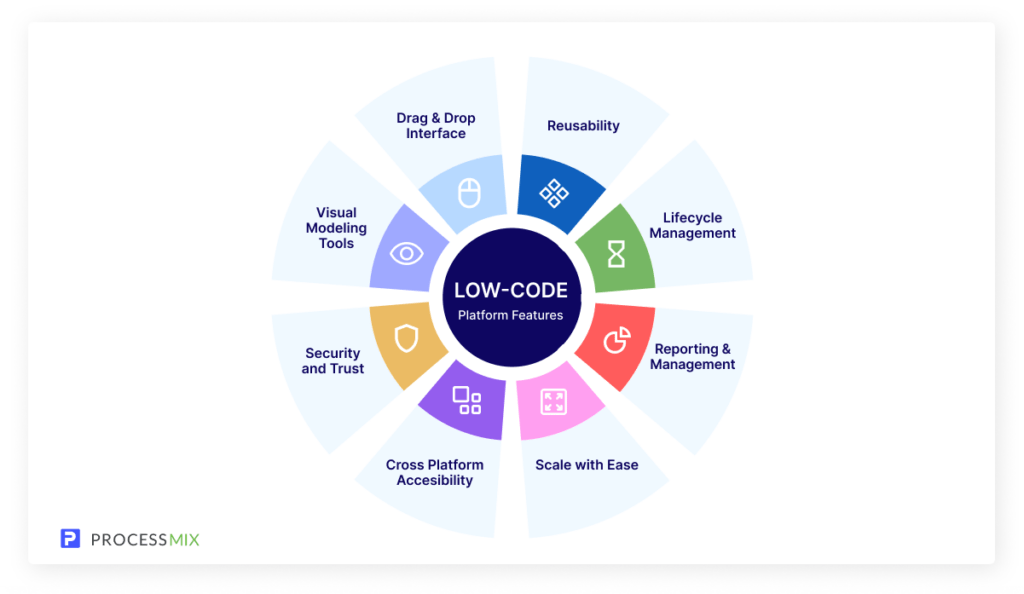
Top 9 Low-Code Trends to Keep an Eye on in 2024
Accessibility for Citizen Developers and Non-IT Stuff
Democratisation of development entails opening up the software development process to citizen developers to reach a larger audience than professional developers. The tools offered by solution providers make it possible for non-technical “citizen developers” to construct simple to large apps without writing lengthy code.
This trend offers several advantages, including higher productivity, shorter time-to-market, and the potential to handle a broader range of business demands. By allowing business users and citizen developers to build their own apps, organisations may lessen their dependency on IT staff and foster an innovation culture.
However, there are some issues associated with development democratisation, such as ensuring the quality and security of applications built by non-technical users, managing the proliferation of applications across the organisation, and addressing governance and compliance issues.
Increased Adoption by Larger Enterprises
According to Gartner, organisations are increasingly relying on low-code no-code development platforms to meet rising expectations for rapid application delivery and highly customised automation workflows.
In order for this trend to take hold, these providers must emphasise scalability and enterprise-grade capabilities, as well as solve associated issues that are preventing the adoption of this ecosystem in large corporations. Large organisations are more concerned with security, scalability, and other features that must be widely implemented.
One of our predictions is that more emphasis should be placed on developing these necessary talents so that organisations of all sizes may profit from this amazing technology.
Integration with AI and ML
Any technology that wishes to survive in the future must be properly integrated with AI and ML. As we can see, Google and Bing are competing fiercely to integrate artificial intelligence to make locating information easier.
One of the most significant low-code trends is to endow these technologies with additional features that will enable citizen developers to target complicated commercial applications without requiring advanced skillsets to design and implement digital solutions.
AI may assist in a variety of ways by delivering increased automation and intelligence skills. For example, artificial intelligence (AI) may be used to improve the development experience by offering intelligent code completion, automated testing, and other productivity tools that help speed up development and increase the quality of low-code applications.
Expansion of Low-Code to Complex Applications
The increasing power to manage the creation of complicated applications is a new notable trend in the low code development environment. As you may be aware, it was once recognised for its capacity to swiftly construct basic apps, but they are now progressively demonstrating its ability to tackle more complicated projects.
This is due to the development of the underlying architecture, which enables developers to solve complicated business processes, industry-specific needs, and enterprise-level projects.
Wider Low-Code Adoption by Regulated Industries
This refers to the growing acceptability of low code in businesses with stringent standards and compliance requirements, such as banking, healthcare, and government. Although a few financial institutions and hospitals have successfully employed low-code platforms, the majority of such organisations are cautious about adopting new technology owing to security and regulatory compliance issues.
In healthcare, for example, it may be used to develop apps that adhere to HIPAA requirements and allow for the secure sharing of patient data. In finance, it may be used to create apps that adhere to data protection, risk management, and anti-money laundering (AML) rules. As low-code platforms improve in terms of security and compliance, more stringently regulated organisations will use them for development projects. Banks, hospitals, and governments will undoubtedly increase their use of low-code.
Integration with DevOps and Agile methodologies
One of the most significant low code predictions is integration with DevOps and flexible processes, which allows low code development to become more flexible, collaborative, and efficient.
Most organisations use agile approaches such as SCRUM and KANBAN in their software development lifecycle to allow for a more timely release schedule and faster feedback response. More seamless connection with other technologies that can make agile development a breeze and prioritise communication, continuous integration and delivery, and quick feedback loops is required for widespread adoption. Even now, some low-code systems include CI/CD automation solutions, saving firms thousands of dollars and allowing them to deliver software up to three times quicker. With the advantages of CI/CD and collaboration tools for software development projects, low-code platform developers will place a stronger emphasis on these aspects in the future year.
Broader Integration capacity BI tools and Data Analytics
One of the most crucial forecasts is integration with data analytics and business intelligence technologies, which allows minimal code development to become more data-driven, smart, and impactful.
Data analytics and business intelligence (BI) technologies are used to analyse and visualise data, spot trends, and make data-driven choices. It can offer citizen developers the tools and skills they need to build applications that harness data and analytics to deliver insights and value by integrating with these technologies.
Enhancing Scalability and Performance
To achieve broad acceptance of minimal code, organisations must be able to design varied and sophisticated applications while also handling bigger workloads to maintain optimal performance.
Scalability is critical for applications because it allows organisations to handle an application’s expanding demands as it grows and expands without interruption. To satisfy enterprise-level needs, they must invest in robust infrastructure and architecture that can handle large-scale applications.
Performance optimisation and the implementation of low-code best practices, on the other hand, ensure that applications designed with this technology not only run effortlessly but also fulfill end-user performance requirements.
User Experience Focused Platforms
To be widely utilised inside an organisation, an application must provide a good user experience that enables workers to execute their business activities more efficiently.
The low-code community has lately recognised the importance of user-centric design and established a clear aim to prioritise improving their offers and skills to improve UI/UX.
This tendency is consistent with the concept that the success of an application is defined not only by its functionality but also by the quality of the user interface and overall user experience.
Try ProcessMIX to Experience 2024 Trends Firsthand
ProcessMIX is a converged platform created by professional developers for professional developers. It unites the low-code back-end software builder with middleware capabilities.
As a low-code tool, ProcessMIX offers a set of pre-build code components that you can freely change to fit your project requirements. The visual development tool, in turn, allows developers to build the basic structure of software faster and focus more on user experience and functional parts. At the same time, ProcessMIX is embedded with an array of productivity tools for code testing, seamless integration, and accelerated CI/CD processes.
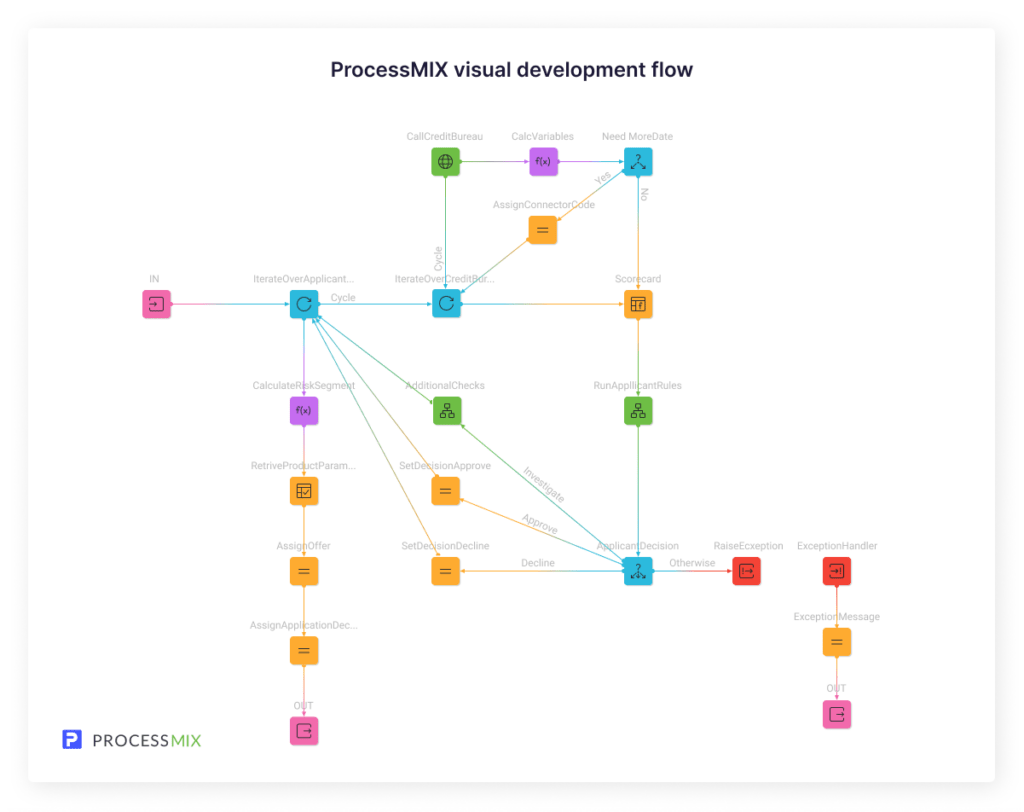
As a middleware, the platform makes it easy to integrate the application with your existing systems and development environments. Integrating a ProcessMIX back-end with another web/mobile app, 3’d party service, or existing digital system, can take a few minutes.
This unique combination of functionalities allows professional developers to build fully customized back-end solutions for different industries at short notice with no hassle. Get a free ProcessMIX Demo and see the benefits of the low-code platform for professional development for yourself.
 Visual Development
Visual Development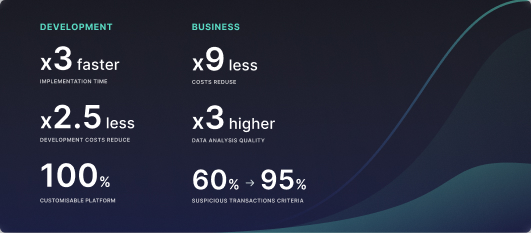 Assignment of risk level and customer category within KYC processes at customer onboarding
Assignment of risk level and customer category within KYC processes at customer onboarding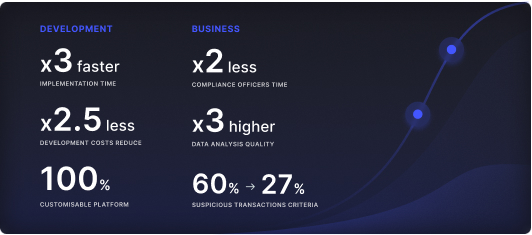 Cross-Sell Offer Calculation for the 12M Client Base
Cross-Sell Offer Calculation for the 12M Client Base
